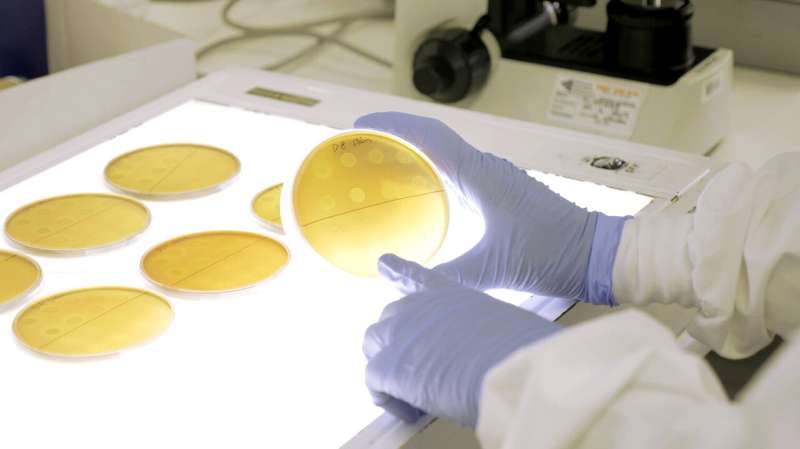This article has been reviewed according to Science X's editorial process and policies. Editors have highlighted the following attributes while ensuring the content's credibility:
fact-checked
peer-reviewed publication
trusted source
proofread
Researchers discover the secret to Strep A virulence

Griffith University researchers have unlocked one of the secrets as to why some forms of Strep A are associated with severe invasive infection.
Invasive Strep A diseases are responsible for more than 163,000 deaths each year globally and a recent increase in cases of invasive Strep A disease has been observed in Victoria, New South Wales and internationally.
For the past 10 years, Institute for Glycomics Associate Professor Manisha Pandey and Professor Michael Good have been researching the pathways in which Strep A can spread through the body.
"The findings from this study will have far-reaching implications as Strep A is responsible for a significant number of invasive and non-invasive infections which cause significant morbidity and mortality globally," Associate Professor Pandey said.
"The reason for this is that invasive organisms express significantly more of the toxin, streptolysin O (SLO), which was the main focus of this study.
"SLO exerts potent cell and tissue destructive activity and promotes Strep A resistance to clearance by white cells in the body which is the critical first element of host defense against invasive Strep A infection."
Professor Good said, "We found SLO alters interactions with host cell populations and increases Strep A viability at sites in the body such as the blood and spleen, and that its absence results in significantly less virulence."
"Essentially, the less SLO present, the less severe the case of Strep A."
SLO is secreted by nearly all Strep A isolates, but those that secrete the most SLO are the most virulent.
This work underscores the importance of SLO in Strep A virulence while highlighting the complex nature of Strep A pathogenesis. This improved insight into host-pathogen interactions will enable a better understanding of host immune evasion mechanisms and inform streptococcal vaccine development programs.
Dr. Pandey said a key finding was the presence of SLO in invasive organisms did not impair the ability of the Strep A vaccine candidate developed by Griffith University's Institute for Glycomics and which is now in a clinical trial.
The Strep A virulence study was part of a Ph.D. project undertaken by Dr. Emma Langshaw.
The research, "Streptolysin O Deficiency in Streptococcus pyogenes M1T1 covR/S Mutant Strain Attenuates Virulence in In Vitro and In Vivo Infection Models," has been published in mBio.
More information: Emma L. Langshaw et al, Streptolysin O Deficiency in Streptococcus pyogenes M1T1 covR/S Mutant Strain Attenuates Virulence in In Vitro and In Vivo Infection Models, mBio (2023). DOI: 10.1128/mbio.03488-22



















